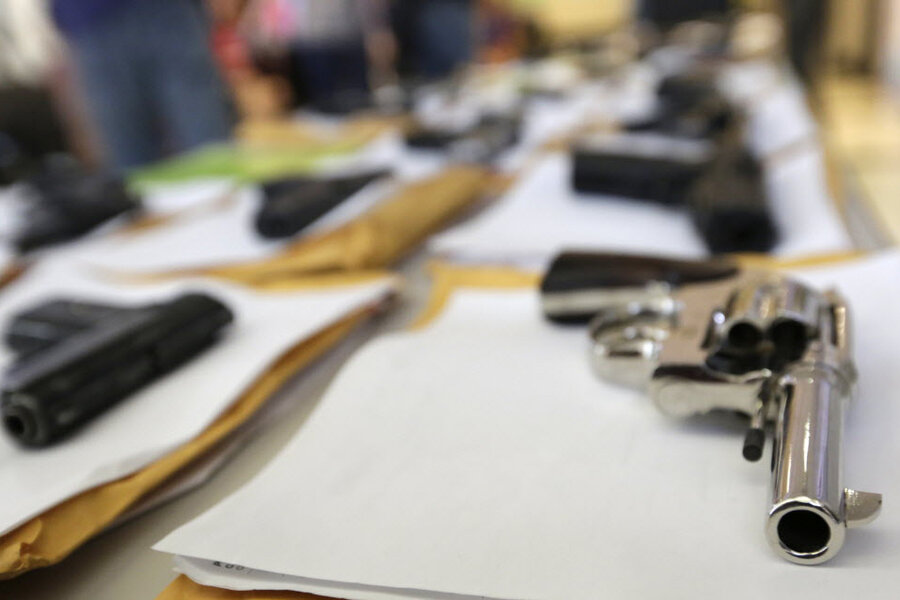Why discussion around guns after mass shootings is so complicated
Loading...
When a gunman opened fire at Umpqua Community College in Roseburg, Ore., last week, he seemed intent on inflicting mass carnage on the unsuspecting student body. By the time he turned the gun on himself, nine people were dead.
Another campus shooting just over a week later at Northern Arizona University in Flagstaff, Ariz., appears to be a different story. While details are still spotty, this shooter, appeared to have become enraged during an argument early Friday morning and produced a gun, which he turned on four students before being apprehended by campus police.
While indiscriminate killing sprees like the one in Roseburg garner massive national attention, incidents such as the one that occurred this morning in Flagstaff are much more common.
In 2012, 32,288 people died from gunshot wounds in the United States – that staggering statistic has been around for several years. It and others like it come out after each mass shooting, but, so far at least, statistics haven't prompted much constructive discussion.
The lack of impact from statistics might be caused by cognitive dissonance – the psychological theory that explains how people are more likely to believe more strongly in their beliefs when faced with contrary evidence. Statistics might convince people who already believe what the numbers are supporting, but they are unlikely to change minds.
For one thing, statistics can be found to support both sides of the debate, as is true with most controversial issues.
For gun rights advocates, low crime rates in Kennesaw, Ga., where gun ownership is mandatory for all heads of household, points to the role that guns can play in deterring crime. In Detroit, the city's police chief came out last year saying that the number of guns in the city likely contributed to the drop in crime. That thinking has prompted calls to ramp up armed security in the nation's schools, churches, and other public places.
Further complicating the discussion, statistics often fail to provide the full context of the data. The figure 32,288 people killed in 2012 is often pulled out in the aftermath of a shooting spree. However, only an estimated 502 – less than 2 percent – of those people were killed in mass shootings, according data analysis conducted by The Oregonian.
Some 64 percent of the 32,288 gunshot deaths in 2012 were a result of suicide by gun, according to research published in the 2015 Annual Review of Public Health.
Media outlets often miss the suicide trend, Newsweek's Mike Mariani reported. The 2013 attempt by Slate via Twitter handle @GunDeaths to track fatal gun violence in the United States resulted in 11,400, about 20,000 less than the U.S. Centers for Disease Control and Prevention reports almost annually. In Newsweek's report on gun danger, the missing 20,000 were almost all suicides.
As Mr. Mariani states in his article, “[Mass shooting] events can warp our view of what gun violence in the U.S. really looks like.”
This report contains material from the Associated Press.






